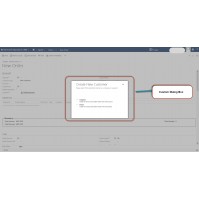Create a targeted marketing list in CRM
Price
- $80.00
Turnaround
1 Day
Revisions
2
Reviews: 0
Views: 5059
- Criteria specified (For dynamic lists)
- Members specified (For static lists)
- Text to include
- Images necessary for branding
- CRM administrator access (The job can also be completed via a screen-share if preferred, but this may delay the delivery)
Microsoft Dynamics 365, Microsoft Dynamics CRM 2016, Microsoft Dynamics CRM Online, Microsoft Dynamics 365 Online
Date Added
05/04/2017
Last Updated
01/05/2017





